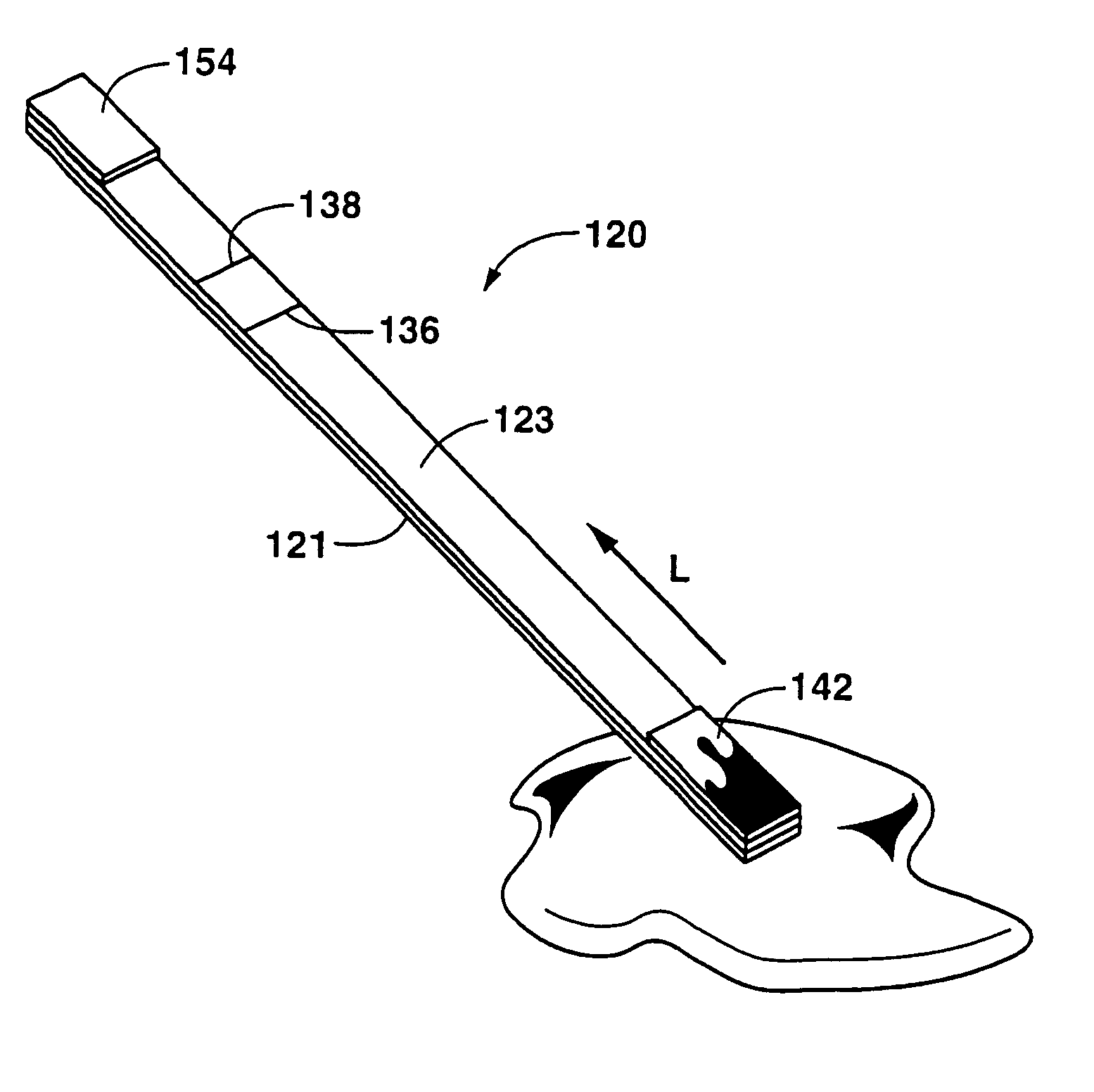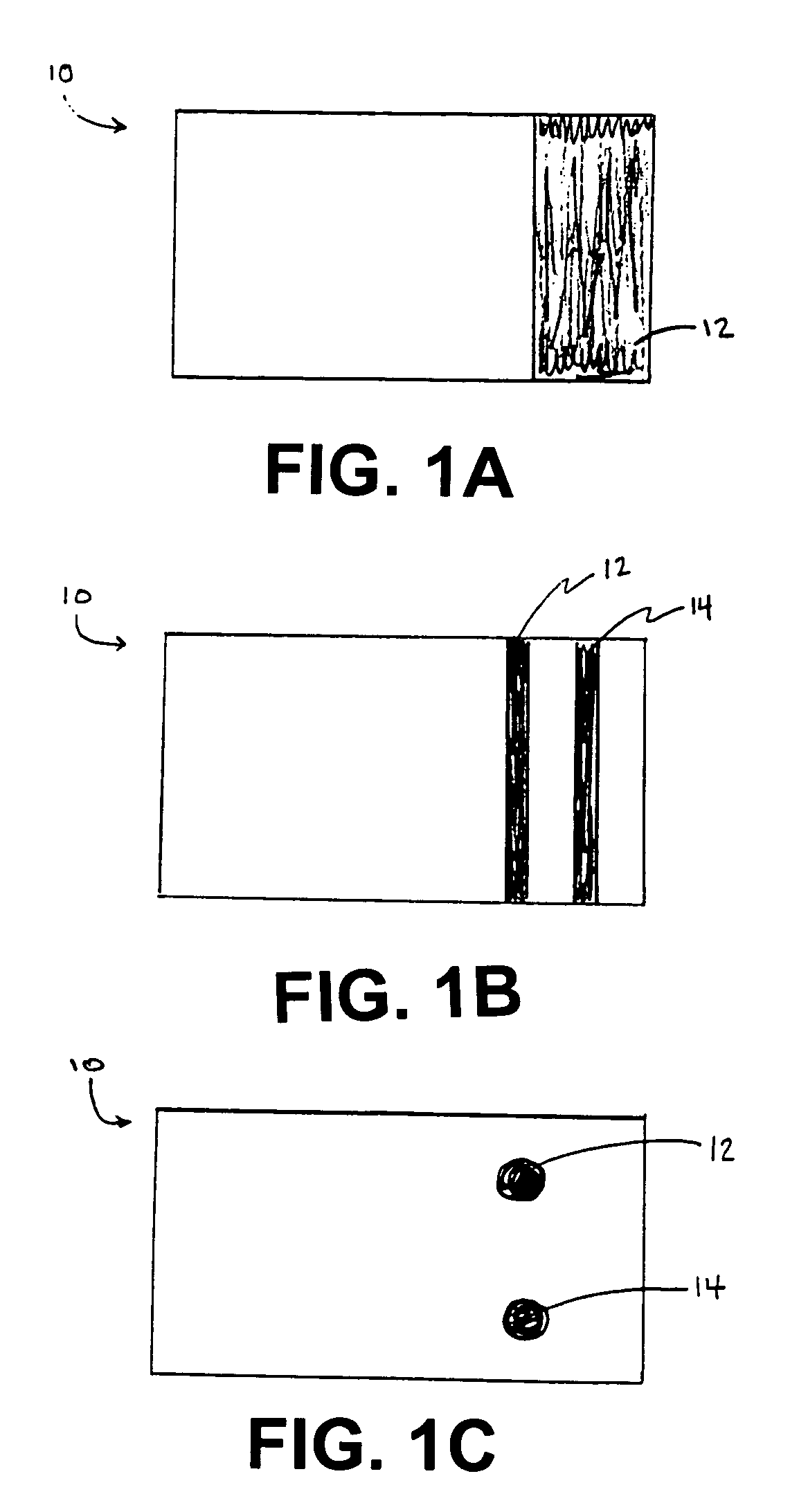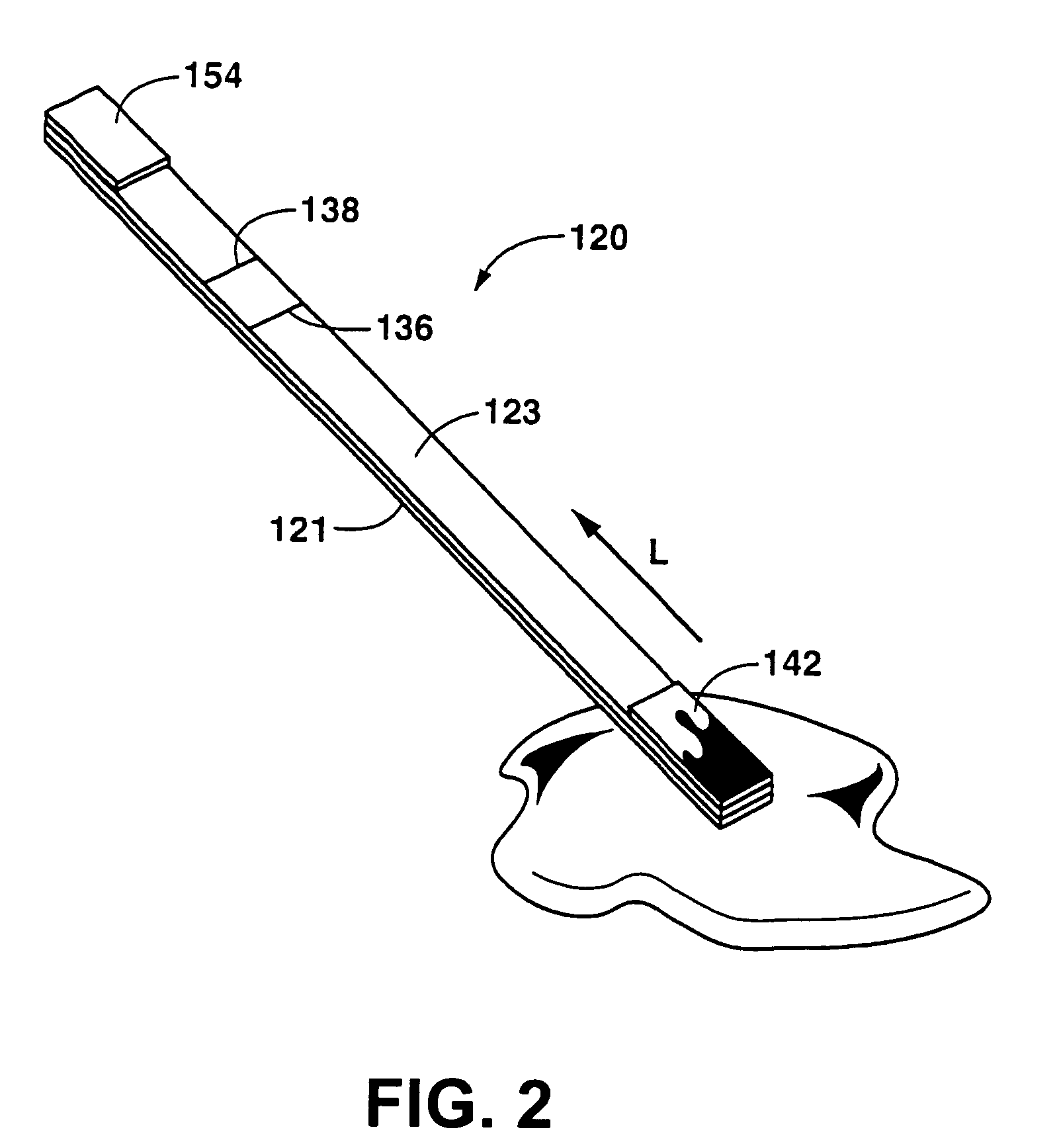Detection of formaldehyde in urine samples
a formaldehyde and urine technology, applied in the field of formaldehyde detection in urine samples, can solve the problems of time-consuming steps requiring specially trained personnel to perform, requiring resources or equipment not readily available to many care providers, and not being practical in the circumstances of children, incapacitated patients, or the elderly
- Summary
- Abstract
- Description
- Claims
- Application Information
AI Technical Summary
Benefits of technology
Problems solved by technology
Method used
Image
Examples
example 1
[0089]The ability of basic fuchsin-sulfuric reagent to indicate the presence of formaldehyde was determined.
[0090]The following concentrations of formaldehyde solutions were prepared in water (mg / ml): 5.625, 11.25, 22.5, 45, 90, 180, and 360 mg / ml (which corresponds to 0.056, 1.125, 2.25, 4.5, 9.0, 18.0 and 36.0 percent, respectively). For each concentration of formaldehyde solution, 50 μl was placed into a microtiter well. In addition, water without any formaldehyde was also placed into one of the microtiter wells as a control.
[0091]Separately, basic fuchsin-sulfuric acid reagent was prepared by mixing 150 μl of 2.0 mg / ml stock solution of basic fuchsin in ethanol with 2.0 ml of water. This produced a solution red in color. This mixture was then slowly combined with 2N sulfuric acid until the red colored solution became colorless.
[0092]Next, 250 μl of the basic fuchsin-sulfuric acid reagent was added into each of the microtiter wells containing formaldehyde and mixed for less than ...
example 2
[0093]The ability to use basic fuchsin-sulfuric reagent without indicating the presence of other aldehydes was determined.
[0094]The following concentrations of aldehydes were prepared in water: 1.0 mg / ml of acetaldehyde, 15.0 mg / ml of isovaleraldehyde, 15.0 mg / ml of phenlyacetaldehyde, and 5.0 mg / ml of phthalic dicarboxyaldehyde. For each concentration, 50 μl was placed into a microtiter well. Basic fuchsin-sulfuric acid reagent was prepared as previously described, and 250 μl was added into each of the microtiter wells. No significant color change was observed in any of the wells.
example 3
[0095]The ability to immobilize or coat basic fuchsin-sulfuric reagent onto a substrate was determined.
[0096]A sheet of KIMWIPE® was coated with basic fuchsin-sulfuric agent prepared in a manner was previously described. The sheet was allowed to air dry. Various concentrations of formaldehyde were prepared and applied to different portions of the sheet. Where the formaldehyde solution was applied, a visible pink color change was generated in a dose dependent manner.
PUM
| Property | Measurement | Unit |
|---|---|---|
| diameter | aaaaa | aaaaa |
| diameter | aaaaa | aaaaa |
| spectral half-width | aaaaa | aaaaa |
Abstract
Description
Claims
Application Information
 Login to View More
Login to View More - R&D
- Intellectual Property
- Life Sciences
- Materials
- Tech Scout
- Unparalleled Data Quality
- Higher Quality Content
- 60% Fewer Hallucinations
Browse by: Latest US Patents, China's latest patents, Technical Efficacy Thesaurus, Application Domain, Technology Topic, Popular Technical Reports.
© 2025 PatSnap. All rights reserved.Legal|Privacy policy|Modern Slavery Act Transparency Statement|Sitemap|About US| Contact US: help@patsnap.com



